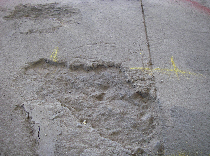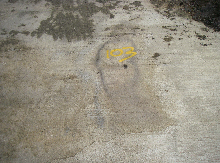Concrete doesn't burn or produce toxic fumes when exposed to fire. In most cases concrete would be considered “fireproof”.
However the heat from a fire can damage concrete and cause the surface to crack and spall. This is substantially more severe in hot fast fires that increase in temperature very quickly and can even produce explosive spalling.
The most common degradation of the concrete structure after a hot fire has occurred is carbonation of the concrete which may not be noticed for many years until the carbonation front reaches the steel reinforcement and corrosion of the reinforcement begins.
The heat of the fire has different effects on the concrete and concrete will generally change colour depending on how hot the fire was.
Inspection of concrete after a fire is critical in determining if the fire has reduced the life expectancy of the concrete structure. A qualified Engineer should be engaged to give advice on whether the structure has been affected.
Several Non-Destructive Testing (NDT) and core removal methods may assist with an engineering assessment of the structure, this may include;
- A visual examination of colour change, cracking and spalling
- Removal of cores or fragments for carbonation testing.
- Pulse velocity testing and mapping can ascertain the extent of possible damage in areas that don’t show any visible indication.








